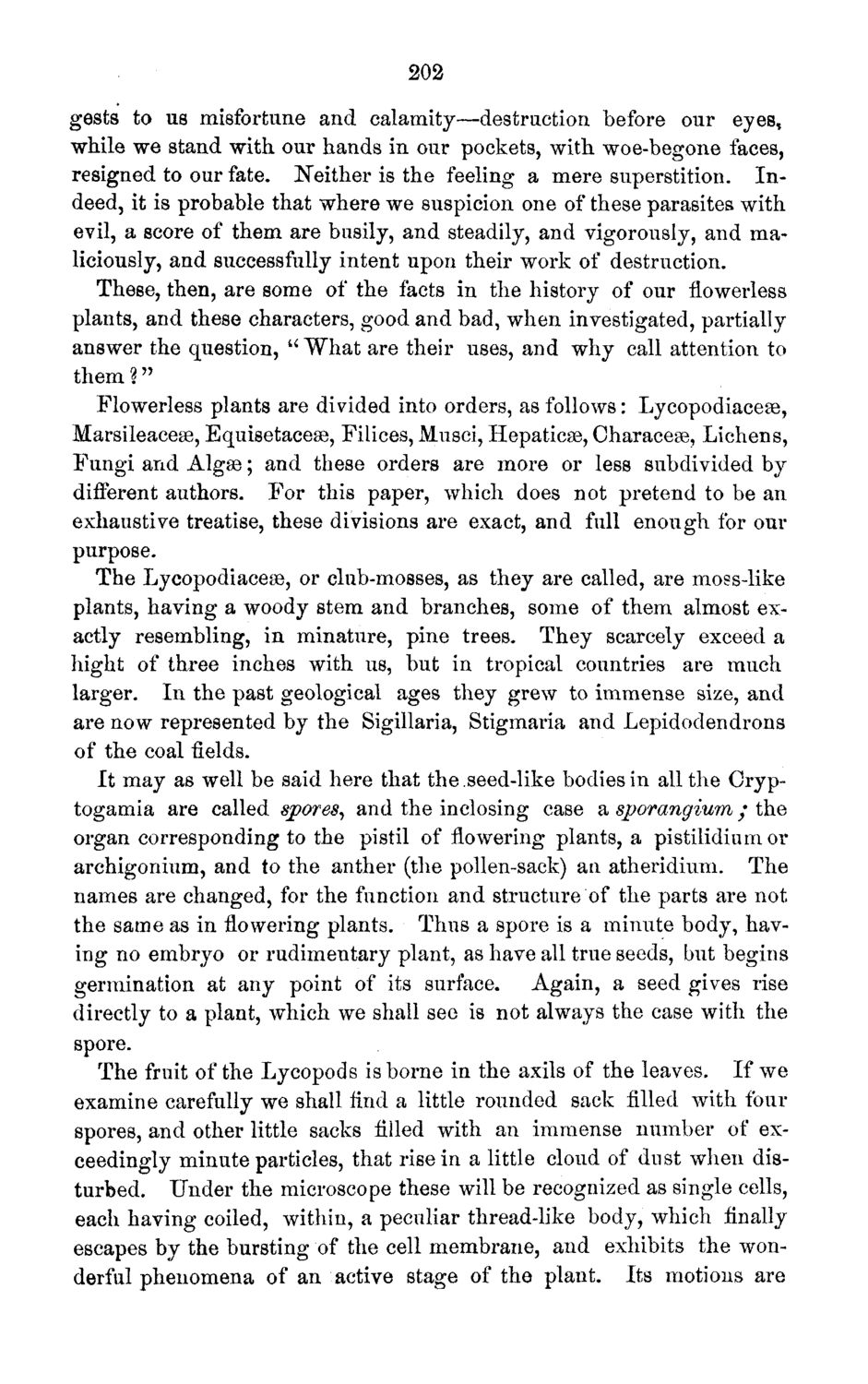| |
| |
Caption: Board of Trustees Minutes - 1871
This is a reduced-resolution page image for fast online browsing.

EXTRACTED TEXT FROM PAGE:
202 gests to us misfortune and calamity—destruction before our eyes, while we stand with our hands in our pockets, with woe-begone faces, resigned to our fate. Neither is the feeling a mere superstition. Indeed, it is probable that where we suspicion one of these parasites with evil, a score of them are busily, and steadily, and vigorously, and maliciously, and successfully intent upon their work of destruction. These, then, are some of the facts in the history of our flowerless plants, and these characters, good and bad, when investigated, partially answer the question, " What are their uses, and why call attention to them?" Flowerless plants are divided into orders, as follows: Lycopodiacese, Marsileacese, Equisetacese, Fiiices, Musci, Hepaticse, Characese, Lichens, Fungi and Algae; and these orders are more or less subdivided by different authors. For this paper, which does not pretend to be an exhaustive treatise, these divisions are exact, and full enough for our purpose. The Lycopodiacese, or club-mosses, as they are called, are moss-like plants, having a woody stem and branches, some of them almost exactly resembling, in minature, pine trees. They scarcely exceed a hight of three inches with us, but in tropical countries are much larger. In the past geological ages they grew to immense size, and are now represented by the Sigillaria, Stigmaria and Lepidodendrons of the coal fields. It may as well be said here that the seed-like bodies in all the Cryptogamia are called spores, and the inclosing case a sporangium; the organ corresponding to the pistil of flowering plants, a pistilidium or archigonium, and to the anther (the pollen-sack) an atheridium. The names are changed, for the function and structure of the parts are not the same as in flowering plants. Thus a spore is a minute body, having no embryo or rudimentary plant, as have all true seeds, but begins germination at any point of its surface. Again, a seed gives rise directly to a plant, which we shall see is not always the case with the spore. The fruit of the Lycopods is borne in the axils of the leaves. If we examine carefully we shall find a little rounded sack filled with four spores, and other little sacks filled with an immense number of exceedingly minute particles, that rise in a little cloud of dust when disturbed. Under the microscope these will be recognized as single cells, each having coiled, within, a peculiar thread-like body, which finally escapes by the bursting of the cell membrane, and exhibits the wonderful phenomena of an active stage of the plant. Its motions are
| |